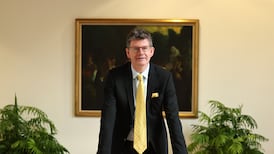ANALYSIS:THE NUMBER of people at work in the economy fell in the first three months of the year and joblessness hit yet another post-crash high.
The decline in employment, of 7,300 (-0.4 per cent) on the previous quarter when adjusted for seasonal fluctuations, followed the first increase in employment in four years in the final three months of 2011.
According to the Central Statistics Office household survey, which is the most comprehensive and accurate measure of jobs and joblessness in the economy, 1,800,300 people were employed in the first quarter of 2012. Although yesterday’s figures suggest that the jobs market has stabilised over the past year, there are 340,000 fewer people at work than at the end of 2007, when employment hit a record high.
Across the 14 sectors of the economy for which figures are given, only four registered seasonally adjusted quarter-on-quarter increases in numbers working (see chart below). The biggest increase was in the education sector.
Of the nine sectors that registered quarterly contractions in employment, the biggest was in the hospitality sector. The fall in jobs in the sector followed three consecutive quarters of strong growth.
The second-largest fall in employment took place in the construction sector, although the sector has stabilised over the past 18 months. The latest figures show that 103,100 people work in the building industry. Almost half of the total decline in employment in the economy since the downturn began has been accounted for by the collapse of the construction industry. In late 2006, 267,000 worked in the building sector.
The shake-out among the self-employed has also shown signs of coming to an end over the past year after having suffered even larger declines than salaried employees during the recession.
The numbers working for themselves and employing others have been broadly stable over the past year, hovering at about 90,000. The self-employed working alone now number about 200,000.
Revisions to previous figures show a less positive picture on unemployment, which hit a new recession-era peak of 312,800 people in the first quarter. While as recently as last week the CSO believed that 14.4 per cent of the labour force was jobless, it now puts the figure at 14.8 per cent. In the final quarter of 2011, the rate was 14.5 per cent.
The jobless rate among men hit a new high of 17.7 per cent, as did the rate for women, which reached 11.5 per cent.
Regionally the mideast and Dublin had the lowest rates of joblessness, at 12.5 and 13.1 per cent respectively. In the worst-hit region, the southeast, the rate was half as high again, at 19.7 per cent.
The trend towards higher long-term employment continued apace in the first quarter to reach a new peak.
Although not seasonally adjusted, and thus not directly comparable with the figures above, 187,000 people had been out of work for a year or more in the first quarter, while 119,000 had been jobless for a shorter period.
There are almost three times as many men in long-term unemployment as there are women.
Young people continue to suffer the highest rates of joblessness. Among teenagers, 37 per cent are out of work, while 28 per cent of 20- to 24-year-olds are jobless.
The rate declines uninterruptedly through the age cohorts, with the lowest rate among the over-65s. Of the 48,000 people over 65 who are still in the workforce, the rate of unemployment is just 2 per cent.
The figures also show that the numbers of retired people jumped significantly – by more than 10,000 – in the first three months compared with the end of 2011. At 365,000, there has never been as many retirees in the State.










